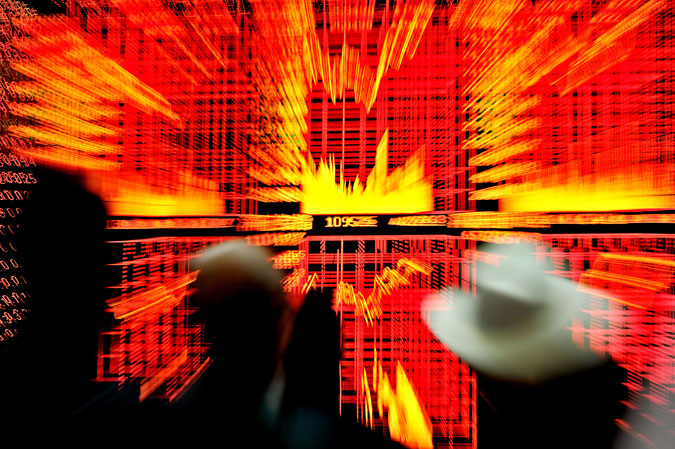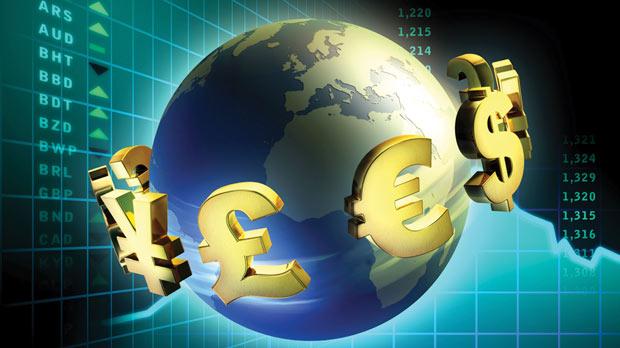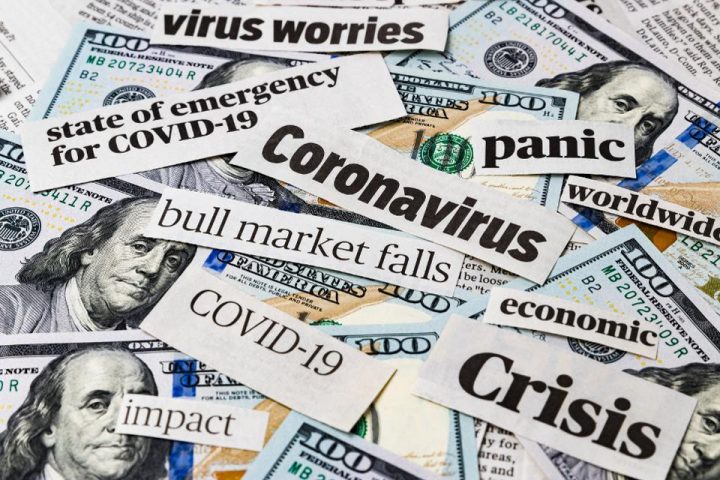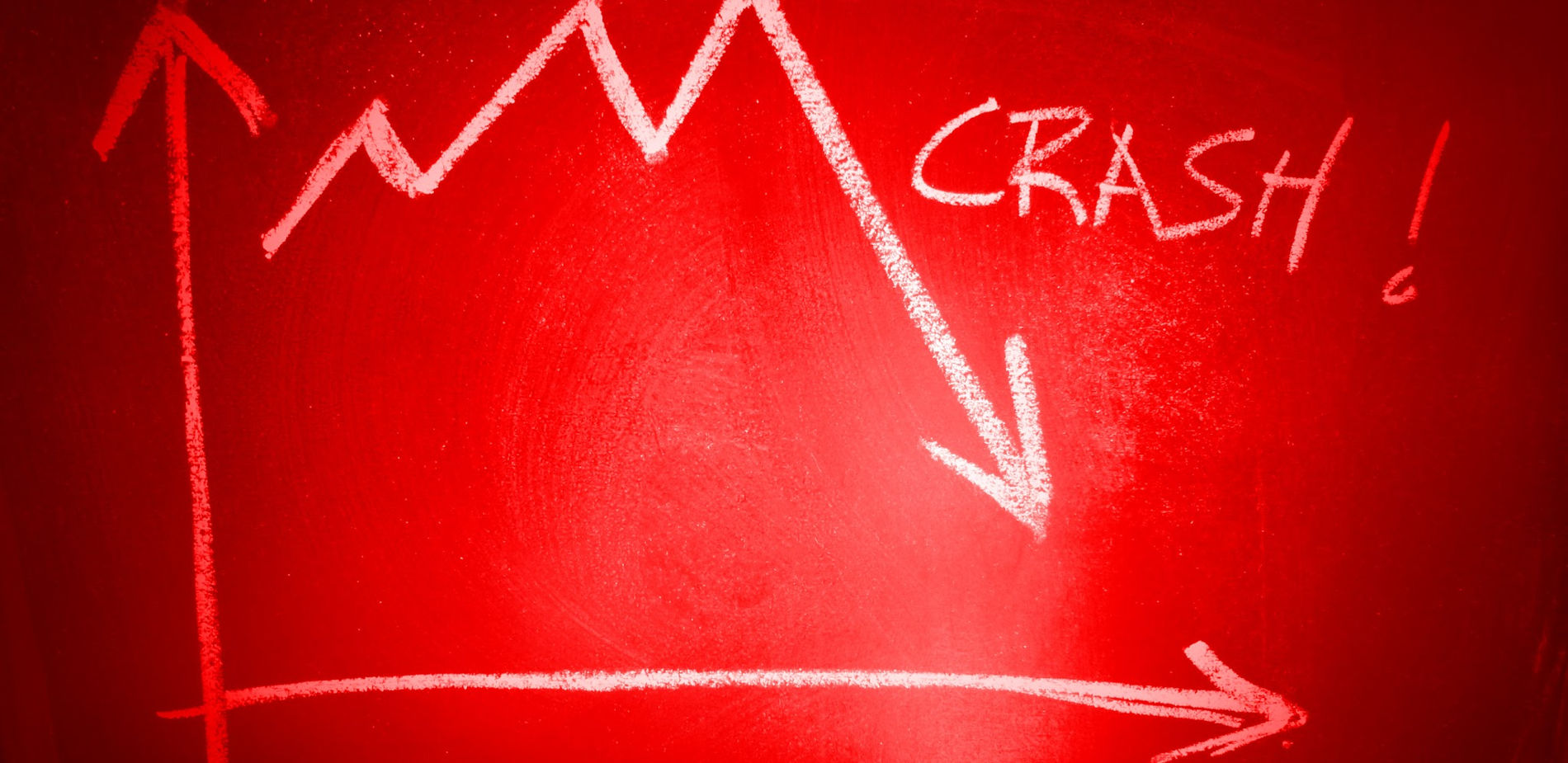On the 14th February I posted an article entitled, ‘Strange times – have U.S. markets gone mad’?
Strange times – have U.S. markets gone mad?
Shortly after that post, this happened…
By the third week in February 2020 U.S. markets were holding up at all time highs and on the 12th February the Dow climbed above 29500 for the first time, fast chasing 30000.
Euphoric highs
The U.S. markets were screaming up – flying high on rocket fuelled steroids! I just couldn’t believe what I was seeing, especially so with the threat of a virus lurking on the horizon, casting shadows over world economies and having forced China to shut down an entire city.
At that moment, I believe market ‘thinking’ was very simple but completely flawed and probably utterly ignorant – it wasn’t our problem – it was theirs! It’s over there not here! It was playing out in another world, and not ours!! The markets continued to hold gains until around 19th February 2020. Then all hell broke loose!
Lows
From these historic euphoric steroid pumped highs came the market lows. By the end of February 2020 and in just 7 days – the U.S. Dow had lost nearly 4000 points, and it got worse, much worse. By 23rd March 2020 the U.S. markets (and world markets) had fallen dramatically as the realisation and fear of the consequences the virus would bring to world economies took hold.
Collapse
The Dow, in particular, fell from its all time high of around 29550 on around 12th February 2020 all the way down to 18592 on 23rd March 2020 – a collapse of nearly 11000 points. Yep, that’s right 11000 points! And all in a matter of weeks.

The Dow intra day readings were even lower.
In a matter of days
In just around 28 trading days the Dow dropped by about 37.5% – 11000 points! From historic highs to historic lows. The tangible fear, at that point, was for it to fall even lower, and that felt very real.
The virus was now centre stage and the fear factor was touching all time highs. World responses to the problem were generally inadequate, woeful in some instances, better in others. Countries were basically fire fighting, battling a disease that we saw coming (we had warning) – but did very little about (not all though).
But then markets started to ignore the situation and fear, and began to climb again – almost as fast as it fell. This isn’t so unlikely after a market fall, but we were facing an unprecedented world wide catastrophic risk to humanity… and yet markets recovered to go back up in quick time…? Money talks!
Central banks fire the big guns
This was partly in reaction to world central bank response – more monetary and fiscal stimulus. Governments and central banks pumped trillions into the economies to hold up the dire effect the lock down and the furloughing workers was doing, or going to do. Monetary and fiscal policies were in force and at far greater levels than ever before and greater than that seen in the financial crisis of 2008/2009.
Central banks were wrapping the world in ‘free’ money again. What else in this particular instance could they do other than fire their bazookas! And they did just that, poured trillions in to the system to prop up world economies.

About turn
Markets then pretty much did a u-turn, and this despite the myriad of uncertainty brought on by the virus. The Dow, for instance, recovered a huge chunk of its heavy fall in just a matter of days.
Then, in around 28 days and from the low point of 18592 points the Dow climbs back up to 24634 where it now seems to have become stuck, or at least it is struggling to breach 24500 or even hold 24000. That aside, the Dow recovered some 6000 points, more than half of the loses. And all this with the virus ravaging world economies.
Yet to wake up!
So, the world goes into fear mode and the markets make a quick buck. Surely, with all this uncertainty the markets should reflect the economic data. But, oh no – I don’t think the markets have yet fully woken up to the economic damage yet still due to unfold, at least in the short term. And then we will have all the extra problem of debt too. The ‘Fear of Missing Out’ (FOMO) effect invaded our commonsense, only this time it was backed up by unrivalled stimulus measures.
Shocking
You may re-call a now infamous and upsetting U.S. business media channel report showing the markets zooming up with the headline, ‘The Dow’s BEST WEEK since 1938‘ – and a caption below reading, ’16 million lose their jobs’ in three weeks. The market rise was being rewarded as unemployment reached never seen before historic highs! 16 million job losses in three weeks – just imagine the misery that was causing. Think about it for a moment…
The average U.S. jobless claim figure before the hit was around 200,000. In three weeks that had risen to 16 million. And there was even worse to come.
So, is it really like this? Is the system messed up? People suffer, lose their jobs, their homes, their savings and even their lives and the money markets cheer the gain..? This is all that is wrong with the capitalist corporate world.
Wrong
This is wrong in so many ways, and is such a worrying aspect of our time. People face catastrophe and the markets applaud…? That can’t be right. The jobless figure went on to reach 36 million in five weeks and is still climbing.
Seriously, the rich gain more, as the poor suffer more and more! Don’t get me wrong, I’m not against earning or making money or making a living – but I certainly do not want it to be achieved at the expense of others, please God no!

I’ll give you one very simple example: Amazon – share price soars, personal fortune increases for the owner as millions head to food banks to feed their children. There is a fundamental failing here. The injustice of the wealth division is sickening.
Central banks
Central banks won’t allow the economy to fail or should I say won’t allow the ‘markets’ to fail. Markets will always be protected. Surely the ‘system’ (markets) should ultimately and properly reflect business success and failure – I guess in most part they do – don’t they? But it appears that we basically have a system now that will never allow market failure – even when there are times it probably should.
Central banks are there to prop it all up – no matter what. It does make sense to have a backstop or fail safe system of sorts especially during a 100 year event such as the onslaught of a world wide pandemic. But do we really need central banks to intervene every time the markets and corporate world stops to ‘sneeze’ – as they mess things up?
There is a place for central bank assistance, at the right time for the right reason such as the coronavirus pandemic. But not for every time the markets fail. Greed shouldn’t be rewarded.
The markets know central banks will always step in. Maybe this has to change.
Prop
If interaction (interference) is truly needed – wouldn’t it be better for the efforts to go in earnest directly to the people and avoid pumping money into the markets such as equities, because that is where it ends up.
Action is needed to help people directly, but instead the money goes to the markets, again and again and again!! We haven’t fully recovered from the last problem of 2008/2009 have we? The world still has that debt.
Debt
More borrowing, more debt – who will pay for it all?
You and me I guess, who else?
The last time I checked the U.S. central bank will have something like an extra $5 trillion debt on its balance sheet due to their latest action. Oh my!
Other posts
Stocks surge again to set new record highs in shadow of coronavirus (COVID-19), 12th February 2020
Strange times – have U.S. markets gone mad?
Market madness or the new norm?
